1. The Elephant Orchestra That Plays Instruments in Thailand

In northern Thailand, elephants have become real-life musicians. The Thai Elephant Orchestra, started by a scientist and a conservationist, features elephants playing drums, xylophones, and even harmonicas. The animals aren’t simply trained—they improvise. Their music has rhythm, structure, and at times, surprising beauty. Originally created to enrich elephants’ lives in sanctuaries, the project has fascinated music lovers and scientists alike. Recordings of their performances show clear patterns, and some researchers believe the elephants are displaying real musical instincts. Instead of being just a novelty, their music has raised questions about animal intelligence and creativity. Could musicality extend beyond humans? These elephants seem to say yes.
2. The Whale Songs That Transformed Environmental Music
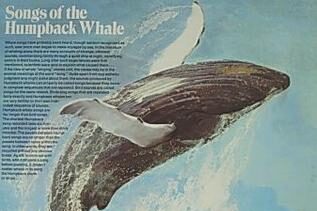
In the 1960s, marine biologist Roger Payne recorded haunting songs of humpback whales. These underwater vocalizations sounded like emotional, structured music. When released publicly, the recordings captivated musicians and the general public. The 1970 album Songs of the Humpback Whale sparked a new genre of nature-inspired music and helped raise awareness for marine conservation. Artists began using whale sounds in folk, classical, and even pop music. Paul Winter and George Crumb were among those who turned whale songs into art. These recordings proved that animal sounds could be more than noise—they could be part of something truly beautiful and human. Whale songs didn’t just change music—they helped save whales.
3. The Time a Bird Inspired One of the Most Famous Classical Compositions
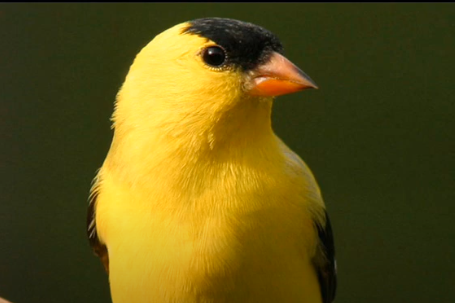
The European goldfinch inspired Antonio Vivaldi’s flute concerto Il Gardellino (The Goldfinch). Vivaldi carefully studied the bird’s cheerful, fast-paced songs and translated them into music. The result? A piece that sounds like a bird dancing through the sky. Later composers, like Olivier Messiaen, took this idea further by turning real bird calls into full compositions. Messiaen even traveled to forests to record and study different species. His goal was to show that birds are nature’s true composers. Today, technology allows musicians to sample bird sounds and turn them into melodies, proving that the inspiration of birdsong lives on in both classical and modern music.
4. The Time a Cat Composed a Musical Piece by Walking on a Piano

One day, composer Arnold Schoenberg’s cat strolled across his piano. Instead of shooing it away, Schoenberg listened—and found inspiration in the random notes. He liked the accidental melody so much, he used parts of it in his own music. This wasn’t the first time a feline influenced a composition. In the 1700s, Domenico Scarlatti claimed his cat Pulcinella inspired a sonata by walking across his harpsichord. These stories may sound silly, but they’ve sparked real debates about whether animals can create music, even unintentionally. Today, some musicians intentionally include their pets’ “compositions” in their work, making cats the most unlikely of co-writers.
5. The Role of Nightingales in Classical Composition

Nightingales are known for their beautiful and complex songs. Classical composers like Beethoven and Chopin tried to mimic their trills and fast notes in piano music. Olivier Messiaen famously turned bird songs into full orchestral pieces, believing birds were nature’s original musicians. In 1924, a British cellist performed a live duet with a nightingale on BBC radio, creating the first-ever human-bird broadcast performance. Today, nightingale calls are still sampled in ambient and electronic music. Their influence spans generations and genres, showing that sometimes the best melodies don’t come from humans at all—but from the trees outside our windows.
6. The Parrot That Memorized and Performed Songs Perfectly

Disco the parrot became a viral star for singing entire songs with accurate rhythm and pitch. He didn’t just mimic human voices—he sang with style, adding his own twists and flair. Scientists say parrots have advanced vocal learning skills because they use a wide range of sounds to communicate in the wild. Disco’s performances showed something deeper: that some parrots might understand timing and melody. Musicians and researchers were fascinated. His recordings inspired studies on animal cognition and rhythm. While parrots are natural mimics, Disco stood out as a true performer, showing that birds might not just echo music—they might actually feel it.
7. The Time a Monkey Played the Keyboard and Inspired a Jazz Performance

During a jazz session, a curious capuchin monkey named Darwin found his way to a keyboard. He began pressing keys randomly, creating a chaotic mix of sounds. But something happened—the musicians joined in. The result was an impromptu jam session that felt oddly rhythmic. Some musicians even said the monkey responded to their tempo and energy. While Darwin probably wasn’t trying to play jazz, the moment sparked conversations about animal interaction with sound. Since then, a few artists have included animal sounds in experimental music. This spontaneous performance reminded everyone that creativity can come from the most unexpected places—even a monkey with a keyboard.
8. The Wolves That Howled in Harmony with Native American Chants
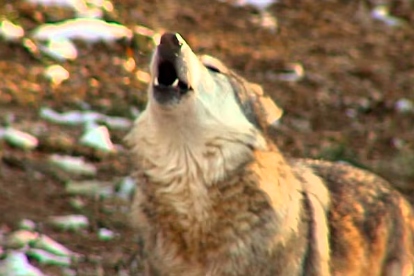
Native American tribes have long noticed that wolves would howl along with traditional chants and drumbeats. These howls weren’t random—many matched the rhythm or tone of the music. Elders saw this as a spiritual connection between humans and animals. Later, scientists found that wolves actually avoid singing the same pitch, creating rich, layered howls—much like a human choir. Some musicians have since recorded wolf howls and blended them with instruments, recreating that magical interaction. The bond between wolves and music shows how nature often finds its own way to join the song.
9. The Bizarre Case of Mice Singing Ultrasonic Songs
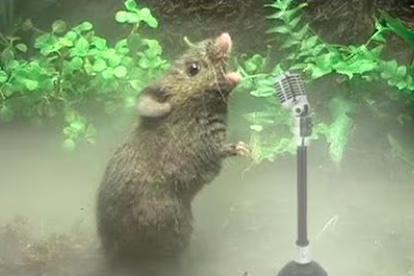
Male mice sing love songs to impress potential mates—but the catch is, humans can’t hear them. These songs are in ultrasonic frequencies, way above our hearing range. Scientists discovered that when the sounds are slowed down, they reveal structured patterns and rhythms. Inspired by this, experimental musicians started recording and using these mouse melodies in their work. The result? Otherworldly, high-tech sounding music with real roots in nature. As recording technology improves, more hidden animal songs like this may find their way into modern music.
10. The Bat Sounds That Inspired Electronic Music Pioneers
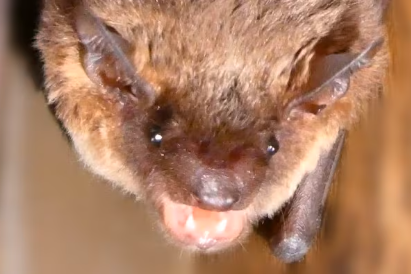
Bats use echolocation—high-pitched sound pulses—to navigate in the dark. When scientists recorded and slowed these calls, they discovered something amazing: the sounds were haunting, layered, and full of melody. Early electronic composers loved this and started using bat sounds in their music. Artists like Karlheinz Stockhausen and Daphne Oram used the calls to create eerie, futuristic tracks. Some even designed synthesizers to imitate bat echolocation. The influence of these winged creatures helped shape the sound of early electronic music—and their legacy still echoes in today’s ambient and experimental genres.
11. The Horse That Kept Perfect Rhythm with a Drummer
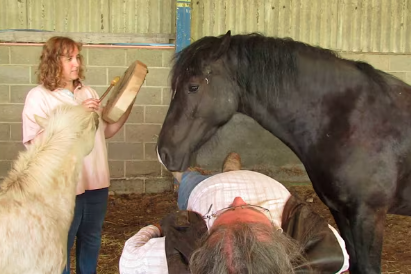
In the late 1800s, a horse named Hans became famous for tapping his hoof in time with a drummer. Audiences were amazed at how perfectly he matched the rhythm—even when he couldn’t see the person playing. At first, people thought he was being cued, but further studies suggested he really could keep a beat. Hans sparked new questions about animals and rhythm. Could horses and other creatures feel timing like we do? Researchers continue exploring how animals respond to music, but Hans remains one of the earliest examples of an animal moving in sync with sound.
12. The Gorilla That Played the Drums and Inspired a Rock Band
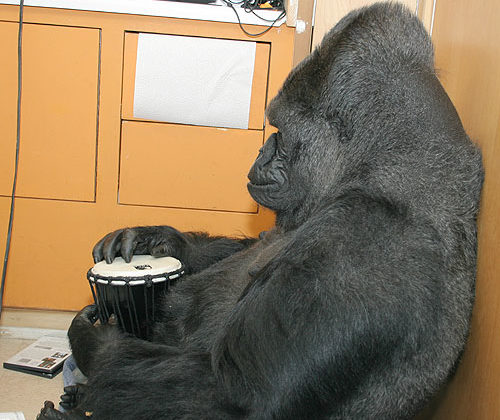
Koko the gorilla, best known for using sign language, also loved to drum. When researchers gave her small drums, she created repeating beats that resembled human rhythm. Her patterns were so steady that a rock band used her drumming as inspiration for one of their songs. Koko’s natural sense of rhythm amazed both scientists and musicians. She didn’t just hit things—she kept time, showing that rhythm might not be just a human trait. Her love for drumming became part of her legacy, reminding us that music can cross species boundaries in the most unexpected ways.


